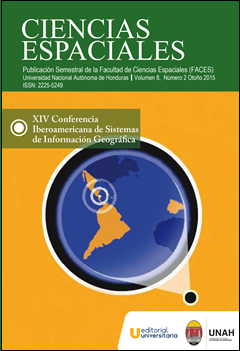Proposal for partial validation of simulation models of urban growth based on cellular automata by sensitivity analysis
DOI:
https://doi.org/10.5377/ce.v8i2.2090Keywords:
Urban growth simulation, cellular automata, partial validation, sensibility analysis, Madrid RegionAbstract
In recent years, geosimulation of urban processes has become important as a tool to develop methods and procedures that allow us to estimate the future impact of urban growth. In particular, cellular automata (CA) based models have been aired more than others due to their ability to reproduce tendencies and the intrinsic characteristics of that dynamism. In this work, we present an alternative to this way of simulation, using these models to develop future alternatives (scenarios). Nevertheless, the obtained results cannot be totally validated because there are no real future data to contrast with. In this context, we present an urban growth CA based model for the Madrid Community where a sustainable future scenario is expected to be simulated. The contribution of this work consists of making alternative proposals for the model’s partial validation to give more robustness to results that cannot be contrasted with real data and then, reduce the associated risk with the landscape urbanization decision making.
Revista Ciencias Espaciales, Volumen 8, Número 2 Otoño, 2015; 409-430
Downloads
1087




